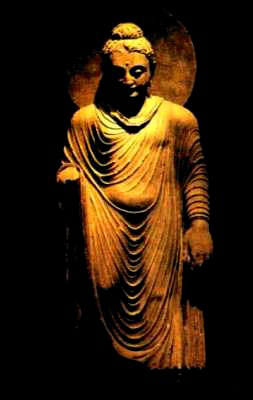BUDDHISM IN GERMANY
 Buddhism in Germany looks back to a history of over 150 years. Arthur Schopenhauer was one of the earliest Germans who were influenced by Buddhism. Schopenhauer got his knowledge of Buddhism from authors like Isaac Jacob Schmidt (1779-1847). German Buddhists or Orientalists like Karl Eugen Neumann, Paul Dahlke, Georg Grimm, Friedrich Zimmermann (Subhadra Bhikschu) and the first German Buddhist monk Nyanatiloka were also influenced by Schopenhauer and his understanding of Buddhism. But also German Indologists like Hermann Oldenberg and his work „Buddha, sein Leben, seine Lehre, seine Gemeinde“ had an important influence on German Buddhism.
Buddhism in Germany looks back to a history of over 150 years. Arthur Schopenhauer was one of the earliest Germans who were influenced by Buddhism. Schopenhauer got his knowledge of Buddhism from authors like Isaac Jacob Schmidt (1779-1847). German Buddhists or Orientalists like Karl Eugen Neumann, Paul Dahlke, Georg Grimm, Friedrich Zimmermann (Subhadra Bhikschu) and the first German Buddhist monk Nyanatiloka were also influenced by Schopenhauer and his understanding of Buddhism. But also German Indologists like Hermann Oldenberg and his work „Buddha, sein Leben, seine Lehre, seine Gemeinde“ had an important influence on German Buddhism.
In 1888 Subhadra Bickshu (Friedrich Zimmermann) published the first edition of the „Buddhistischen Katechismus“, a work based on the “Buddhist Catechism” of Henry Steel Olcott.
In 1903 the first German Buddhist organisation was founded by the Indologist Karl Seidenstücker in Leipzig. In 1904 Florus Anton Gueth became the Theravada monk Nyanatiloka. Some important Pali texts were translated into German in the early part of the 20th century by scholars like Karl Eugen Neumann (1865-1915), Nyantiloka and others.
In 1922 Hermann Hesse published his famous work “Siddhartha”, which has been translated into many languages.
In 1924 Dr. Paul Dahlke established the first German Buddhist monastery, the “Buddhistische Haus” in Berlin.
The German Dharmaduta Society, initially known as the Lanka Dhammaduta Society and dedicated to spreading the message of the Buddha in Germany and other Western countries, was founded in 1952.
In 1957 The German Dharmaduta Society purchased the premises of “Das Buddhistische Haus” from the heirs of Dr. Dahlke. It is now a Centre for the spread of Theravada Buddhism in Europe. As the oldest Buddhist institution in Europe, German authorities have designated it a National Heritage site.
According to the Deutsche Buddhistische Union (German Buddhist Union), an umbrella organisation of the Buddhist groups in Germany, there are about 245,000 active Buddhists in Germany (as of 2005 [1]), 50% of them are immigrated Asians. They are organized in about 600 groups. In 1977 there were just 15 Buddhist groups.
Literature
– Hellmuth Hecker: Chronik des Buddhismus in Deutschland. 3. Aufl. Deutsche Buddhistische Union, Plochingen 1985
– Jürgen Offermanns: Der lange Weg des Zen-Buddhismus nach Deutschland. Vom 16. Jahrhundert bis Rudolf Otto. Lunds Univ., Lund 2002, ISBN 91-22-01953-7
– Eva Sabine Saalfrank: Geistige Heimat im Buddhismus aus Tibet. Eine empirische Studie am Beispiel der Kagyüpas in Deutschland. Farbri, Ulm 1997, ISBN 3-931997-05-7
– Klaus-Josef Notz: Der Buddhismus in Deutschland in seinen Selbstdarstellungen. Eine religionswissenschaftliche Untersuchung zur religiösen Akkulturationsproblematik. Lang, Frankfurt a.M. u.a. 1984.
– Andrea Rübenacker: Buddha boomt. Eine inhaltsanalytische Untersuchung der im deutschen Fernsehen gesendeten Beiträge zum Thema “Buddhismus in Deutschland”. Unter besonderer Berücksichtigung einer stofflichen Buddhismus-Betrachtung. Diss. Dortmund 2000.
– Volker Zotz: Auf den glückseligen Inseln. Buddhismus in der deutschen Kultur. Theseus, Berlin 2000 (ISBN 3-89620-151-4)
External links
– Deutsche Buddhistische Union (DBU)
– Buddhactivity Dharma Centres database
– Das Buddhistische Haus, Berlin-Frohnau
– Buddhism Today – Buddhism in Germany, by Martin H. Petrich
– Source : Wikipedia




